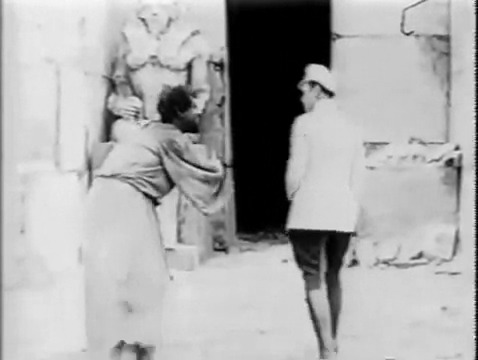|
Filmizing
Film look (also known as filmizing or film-look) is a process in which video is altered in overall appearance to appear to have been shot on film stock. The process is usually electronic, although filmizing can sometimes occur as an unintentional by-product of some optical techniques, such as telerecording. The effect is the exact opposite of a process called VidFIRE. Differences between video and film * Frame rate: 24 frames per second for film, 30 or 40 frames per second for old SD video. Modern video cameras shoot 24 and up as well. * Shutter angle: Shorter (90° to 210°) for film, often ~350° for old video. Modern video cameras have adjustable electronic, or – in ''Arri's'' video cameras – mechanical shutters. * Dynamic range: film and video systems have widely varying limits to the luminance dynamic ranges that they can capture. Modern video cameras are much closer to the dynamic range of film, and their use is better understood by directors. * Field of vie ... [...More Info...] [...Related Items...] OR: [Wikipedia] [Google] [Baidu] |
Video
Video is an electronic medium for the recording, copying, playback, broadcasting, and display of moving visual media. Video was first developed for mechanical television systems, which were quickly replaced by cathode-ray tube (CRT) systems which, in turn, were replaced by flat panel displays of several types. Video systems vary in display resolution, aspect ratio, refresh rate, color capabilities and other qualities. Analog and digital variants exist and can be carried on a variety of media, including radio broadcast, magnetic tape, optical discs, computer files, and network streaming. History Analog video Video technology was first developed for mechanical television systems, which were quickly replaced by cathode-ray tube (CRT) television systems, but several new technologies for video display devices have since been invented. Video was originally exclusively a live technology. Charles Ginsburg led an Ampex research team developing one of the first practical vi ... [...More Info...] [...Related Items...] OR: [Wikipedia] [Google] [Baidu] |
Hertz
The hertz (symbol: Hz) is the unit of frequency in the International System of Units (SI), equivalent to one event (or cycle) per second. The hertz is an SI derived unit whose expression in terms of SI base units is s−1, meaning that one hertz is the reciprocal of one second. It is named after Heinrich Rudolf Hertz (1857–1894), the first person to provide conclusive proof of the existence of electromagnetic waves. Hertz are commonly expressed in multiples: kilohertz (kHz), megahertz (MHz), gigahertz (GHz), terahertz (THz). Some of the unit's most common uses are in the description of periodic waveforms and musical tones, particularly those used in radio- and audio-related applications. It is also used to describe the clock speeds at which computers and other electronics are driven. The units are sometimes also used as a representation of the energy of a photon, via the Planck relation ''E'' = ''hν'', where ''E'' is the photon's energy, ''ν'' is its freq ... [...More Info...] [...Related Items...] OR: [Wikipedia] [Google] [Baidu] |
Film Gate
The film gate is the rectangular opening in the front of a motion picture camera where the film is exposed to light. The film gate can be seen by removing the lens and rotating the shutter out of the way. The film is held on a uniform plane at a calibrated distance in the gate by a pressure plate behind the film. Occasionally, as the film passes through the gate, friction can cause small slivers of celluloid to break off and stick in the side of the opening. These pieces of debris are called ''hairs''. A "hair in the gate" will remain in front of the film and create a dark line that sticks into the edge of the film frame as the camera is filming a shot. A hair can ruin the shot and is almost impossible to fix in post production without using modern digital removal techniques. Because of the intractability of this problem the focus puller (or 1st Assistant Camera) will open the camera and examine the gate for hairs at the end of each shot. Normally the assistant director will call ... [...More Info...] [...Related Items...] OR: [Wikipedia] [Google] [Baidu] |
Registration Pin
{{unreferenced, date=January 2014 A registration pin is a device intended to hold a piece of film, paper or other material in place during photographic exposure, copying or drawing. Registration pins are used in offset printing and cartography, to accurately position the different films or plates for multi-color work. In traditional, hand-drawn animation, the registration pins are often called pegs, and are attached to peg bar Also, in traditional, hand-taped printed circuit board artwork, usually at two or four times actual size. Sometimes on a single transparent base, usually mylar, with Layer 1 being on the front and Layer 2 being on the back, in red and green, respectively, for later "separation" into component parts using a process camera. Motion picture cameras and related applications In motion picture cameras, the pin(s) hold the film immovable during exposure. In certain "professional" motion picture cameras and "step" printers, there may be ''two'' registration pins: o ... [...More Info...] [...Related Items...] OR: [Wikipedia] [Google] [Baidu] |


